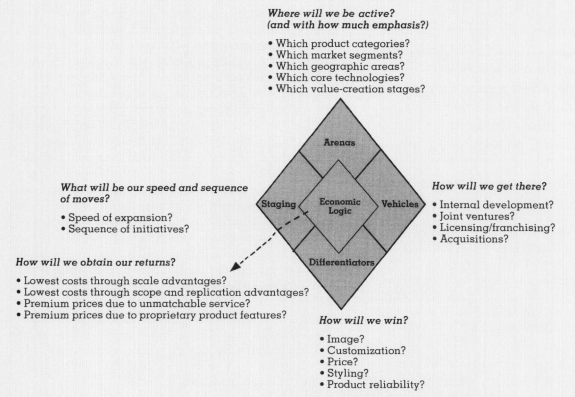
Mr Bossidy states the obvious. We all know that strategy, no matter how brilliant, is only good if it can be executed. But he does bring home the point.
German military strategist Helmuth von Moltke sagely noted “No battle plan survives contact with the enemy.” In other words, when your strategic plan meets with the real world, things often go wrong and never quite play out the way predicted. We need to prepare for contingencies and also be willing to change/modify our plans. This brings to bear the important distinction that a strategic plan (whatever that means) does not equate to your strategy.
Strategy is longer term and doesn’t change year to year. It is based on insight, that drives hard choices to bring focus to the organization and ultimately culminates in coordinated action to achieve the intended results. Invariably you’ll produce a plan to execute your strategy. But they are not one and the same.
OK, so we get to the point: once a strategy is crafted, strong execution begins with something very unoriginal and unglamourous… good old organizational alignment. I’m talking about everyone working like a competitive rowing team performing synchronized movements of the same strength and rhythm to multiply output and keep the skull on the straight (shortest) path to success. In rowing, there’s the cooxswain who verbally commands steering, speed, timing, and fluidity and is responsible also for crew safety, motivation and improving rowing technique.
When running a company, verbal communications (as well as written and electronic messages for that matter) aren’t sufficient. There are additional practical elements that need to be employed for true alignment. These elements are simply to be thought of as organizational sign posts or guides.
The reason why you need organizational sign posts and not just directives is because strategy is executed by everyone from the CEO to the janitor. And while the people closer to the power center have the privilege of direct involvement in the strategy, many others who actually are in the trenches interacting daily with customers and suppliers do not. As an organziation is made up of people, human beings notoriously need to be reminded in as many ways as possible (and as often and consistently as possible) what they need to do to remain focused on, lest they revert to their normal behaviors and old habits of work. Change is difficult because it involves people and people generally don’t like anything that threatens the familiar. When going to a new place, people get lost along an unfamiliar road. You can keep yelling to them the directions but they’re going to use their eyes and other senses as well to assess if they really want to go there. So erect sign posts to nudge them and help them along until it becomes business as usual. When the grass is worn and a clear path forms, that’s when people move the quickest and most naturally, even without signs.
These sign posts include hard and soft structures, such as:
- organizational and job structures (hard)
- incentives and rewards, including performance systems (hard and soft)
- regulations and policies (hard)
- cultural and values, including corporate rites and heroes (soft)
We’ll discuss more about structures in detail but for now, mull over some examples from your own experience. Think of inconsistencies from the “storyline” in the numerous change management programs I’m sure you’ve been subjected to over the course of your career. Has what management been communicating been reinforced by their actions?
Too often, structures remain unchanged (like promotion criteria) and still point to and reinforce the old strategy. This leaves people confused and they cling on to the old messages unwittingly transmitted by the structures of yesterday. Mixed messages is the enemy of alignment and the result is confusion on the ground or a lack of confidence in the leadership.
We’ll dive deeper in our next post. Until then, have a great week ahead.







